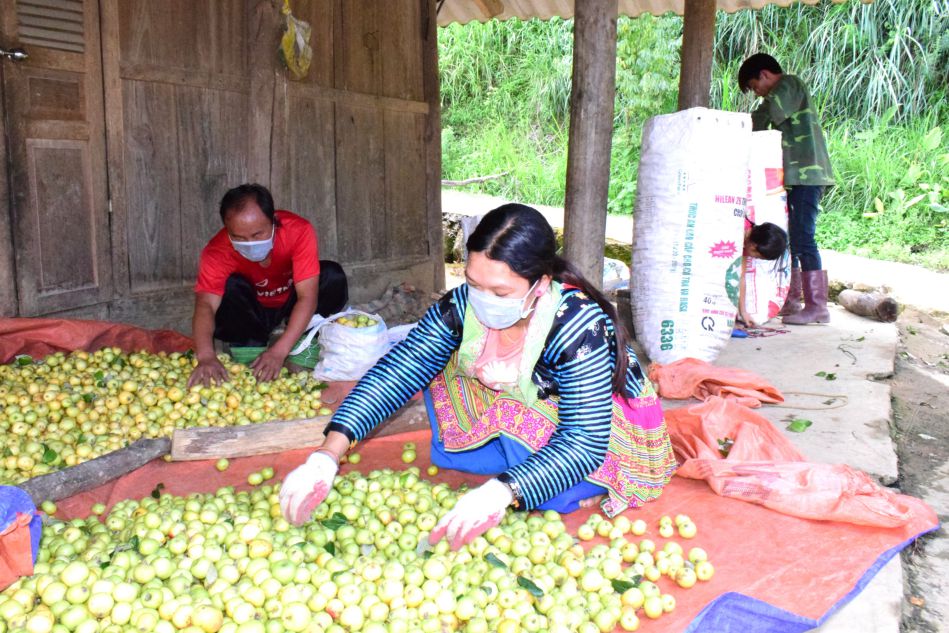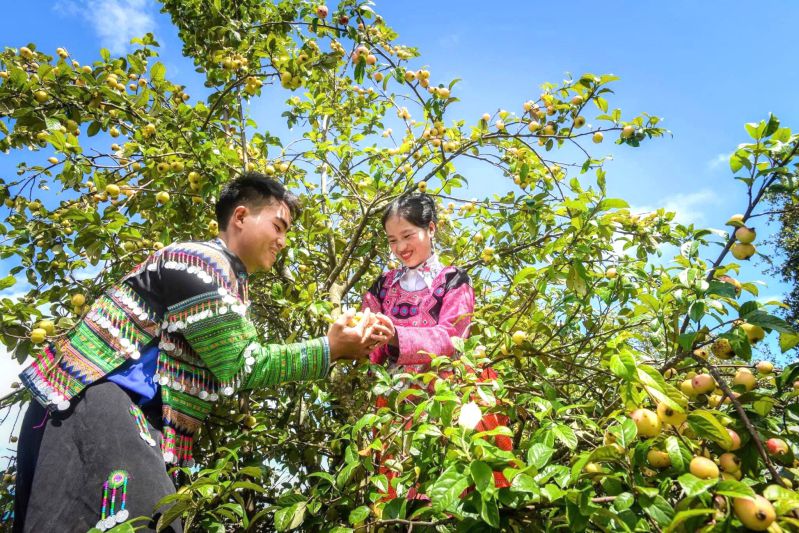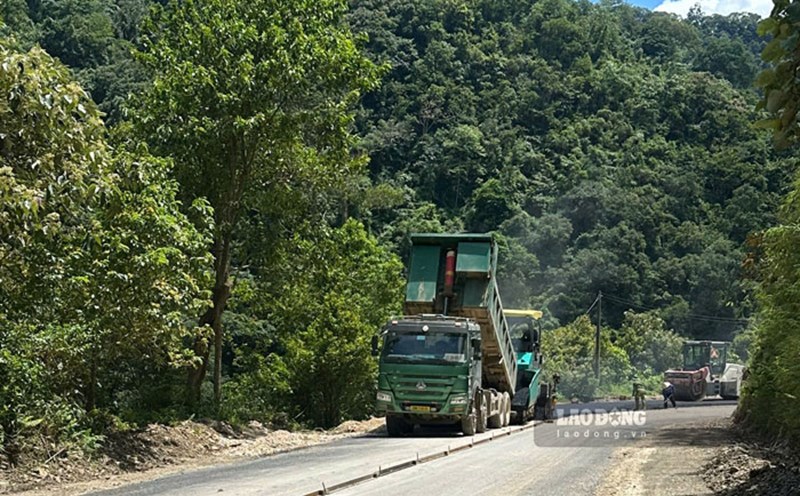The "capital" of apples painted on a high mountain
In late September, along the way to Ngoc Chien, Son La province, the clusters of golden ripe mountain pears like wild honey hang on the branches. The whole mountainous and forest area seems to have been colored, signaling that the harvest season has arrived.
According to a report by the Department of Agriculture and Environment of Son La, the whole province currently has more than 11,000 hectares of paint, with an output of over 30,000 tons of fruit per year. Communes such as Ngoc Chien, Chieng Hoa, Ta Xua, Co Ma, Xin Vang have become the "capital" of apples, bringing tens of billions of VND to the people each harvest season.
The paint fruit season usually starts from September to the end of October. This is the time when the mountain pine tree - which has been associated with the H'Mong and Thai ethnic groups for generations - brings in an important source of income, becoming a typical crop season in the steep Son La area.
Mr. Khang A say - Party Cell Secretary, Head of Nam Nghiep Village, Ngoc Chien Commune led us along the red dirt road, crossing corn and cassava grasslands to visit the mountain pine forest. Mixed with the roots of ancient mountain pine trees as big as a hugger is a series of small trees that have only been planted for a few years.
Under the tree canopy, Mr. Khang A say shared: Thanks to the staff's propaganda and benefits, and the support of seeds and techniques, the people have boldly expanded the area. Now, fruits of trees over 10 years old can be sold for 15,000 - 20,000 VND/kg. The whole village has about 500 hectares, few households have 2 hectares, many households have nearly 20 hectares. Thanks to painting, my village now has more income, motorbikes, refrigerators, televisions, and a much more spacious house than before".
From memories of exchanging things to reserves
For Ms. Thao Thi Chi - one of the households attached to the mountain goose tree in Nam Nghiep village, the memory of this fruit is still intact. "In the past, after harvesting, we had to carry the fruit by horse to the commune center, it took half a day to sell to traders, or exchange it for salt, oil, fabric, and rice. At that time, the price was only a few hundred dong/kg, but thanks to paint, many households were less hungry, and had some extra money to spend" - Ms. Chi recalled.
Ms. Chi smiled brightly when mentioning today's change: "Now the price is higher, the fruit is easy to sell. People have money to build new houses, buy motorbikes, no one thinks about the drug plant like before. painting has changed the lives of the villagers".

In Ta Xua commune, Mr. Song A Phong's family has more than 2 hectares of paint for harvest, averaging 3 tons/ha. This year, traders come to the garden to buy more than 5 tons of fruit, the selling price ranges from 7,000 - 10,000 VND/kg depending on the time. After deducting expenses, his family made a profit of about 40 million VND.
"The income from painting is stable, and it does not take much care. For us in the highlands, this is a long-term source of life, said Mr. Phong.
Forest protection, tourism development, export routes opening
Not only bringing economic value, mountain goat trees also have great environmental significance. Roots are firmly planted in the soil, leaves cover steep slopes to help keep forests, limit erosion, and prevent landslides.
The season of white flowers spreads all over the mountain slopes, the season of brilliant yellow fruits has become a unique tourist highlight. Tourists coming to Ta Xua to see the sea of clouds or go up to Ngoc Chien to swim in hot springs are excited by the vast mountains of mountain goats. Thanks to that, many households combine selling fresh and dried products, visiting apple growing gardens and opening homestay services, developing eco-tourism.
Along with the domestic market, paint products have initially reached international markets. Many cooperatives and businesses participate in processing wine, vinegar, tea from paint, putting goods on supermarket shelves, and even exporting to Korea and Japan.
Ms. Giang Thi Thu Tham - Director of Thuan Chau Green Agricultural Cooperative said: "Currently, the cooperative is cooperating with the people of Co Ma commune to purchase fruit and produce lacquer apple vinegar. To date, we have produced over 3,000 liters, selling them for 70,000 VND/liter. Customers are very favored, some partners even order to distribute large quantities".
From mountain and forest products to protected brands
According to the Department of Agriculture and Environment of Son La province, in addition to its economic value, mountain goose trees also help green the vacant land of steep hills and mountains, protecting the ecosystem. Pints have a characteristic sour, sweet, slightly sandy and fragrant taste, are used to make fruit juice, wine, vinegar and are a valuable spice in traditional medicine, have the effect of supporting digestion and reducing blood fat.

In order to enhance the value of the product, in September 2018, the Intellectual Property Office (Ministry of Science and Technology) issued a Certificate of Brand "Son La Stateboard". Some units such as Bac Son Company Limited, Nam Long paint Cooperative, Bac Yen paint General Service Cooperative were granted the right to use the trademark. This is an important step for the painted apple to become a unique brand when mentioning Son La mountains and forests.
The goal is that by 2030, Son La's paint area will be increased to about 20,000 hectares, forming a concentrated raw material area for deep processing and export.
"Things to keep" for future generations
For people in the highlands, the mountain goose tree is now not only a mountain fruit but also a "reserve" for their children and grandchildren. Mr. Khang A say confided: "Taking the paint today will still benefit the children and grandchildren. Trees cling to the forest, people cling to the soil, people's lives are getting better and better, reducing hunger and poverty sustainably".
Across the mountain slopes, from Ngoc Chien, Chieng Hoa, Co Ma to Ta Xua, Xim Vang, the mountains and rivers of paint are spreading out to the sky. Not only bringing its sweetness, sourness, and characteristic aroma, paint is also the "sweet fruit" of change, demonstrating the efforts to escape poverty sustainably by sticking to the village and forest of the people of the Son La highlands.









